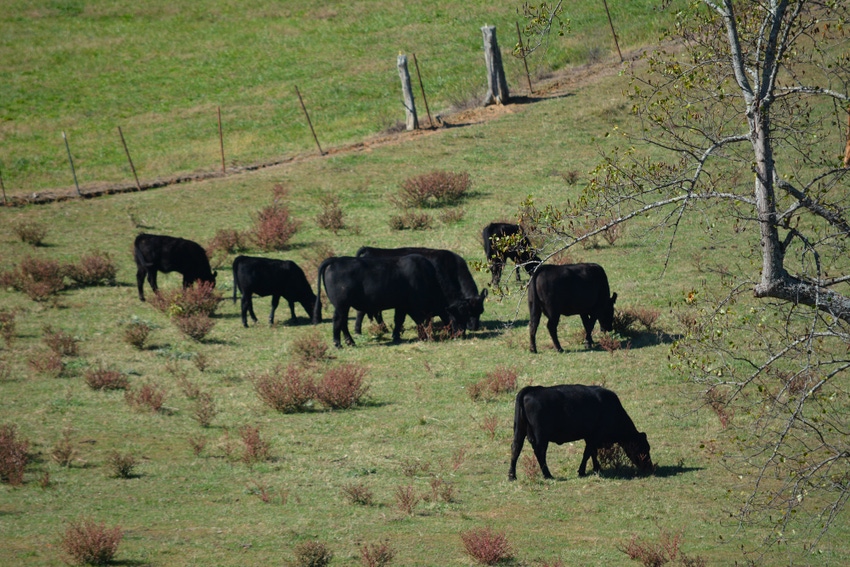November 14, 2017

Pastures that have been overgrazed or overstocked can not only reduce profitability in the long run, but also can drive livestock to forage on low nutrient plants, including poisonous varieties, putting cattle at risk and further creating barriers to profitability on the ranch.
Range specialists say the issue of overgrazing becomes problematic for livestock producers during times of drought, limited forage, unexpected increases in herd size, and as a result of damaged range land from natural disaster, such as the recent flooding caused by Hurricane Harvey in South and Southeast Texas.
In addition, Dr. Bill Rogers, Texas A&M AgriLife Research ecosystem science and management professor in College Station, says the unwanted introduction or lack of control of invasive species can increase the risks to livestock health on the range and in the overall ecosystem.
"The introduction of invasive plants, animals, fungi and microbes disrupt critical biochemical cycles and ecosystem processes,” Rogers told a group of producers recently during a Texas AgriLife workshop. "The results cause tremendous ecological and economic consequences, both known and unknown."
INVASIVE SPECIES
He said an invasive species successfully reproduces in a new range, invades from its original site, and persists in its new locations. One example might include non-native weed species introduced during the serious drought earlier this decade that caused producers to rely on hay transported from out-of-state, bringing in non-native weed species.
In rare instances, introduction of microbes, fungi and pests – such as ticks, which can be distributed by cattle brought into a pasture from other states, Canada or Mexico – can occur in spite of preventive treatments.
By far the leading problem for producers across the Southwest, however, is overgrazing caused by herd size or a lack of adequate forage in the pasture.
"I don't believe any cattle rancher wants to overgraze the land. Overgrazing a property leads to poor ground cover and reduces long-term profit," says Dr. Megan Clayton, Texas AgriLife Extension range specialist in Corpus Christi. "Bare ground can allow weed infestations, soil erosion and water loss."
She warns that cattle have a preference for better grasses, and as a result, these grasses are the first to die off when overgrazed, leaving only less desirable forage that’s low in nutritive quality.
OVERGRAZING
Overgrazing often results from underestimating forage requirements. In general terms, she said, a 1,000 pound cow with calf will require 26 pounds of dry forage per day. A 1,200 pound cow would require about 31 pounds of dry forage a day. She says as cow size increases, as it has in recent years, the amount of forage required will also increase.
This increase in cow size has caused many producers to decrease the number of head they run in a pasture. But a few fail to calculate requirements properly, or may suffer a loss in forage as a result of environmental and climate conditions.
She says even when calculating forage ability correctly, cattle can suffer if the forage in the pasture lacks in nutritional value. She warns that cattle prefer lots of green, leafy material and will avoid stemmy plants after they mature. It's important to monitor the best grazing grasses on the property and plan to move cattle to avoid overgrazing. As a general rule, she recommends moving cattle to the next pasture when half of those quality grasses remain to avoid overgrazing.
Another problem many Texas producers are facing is the encroachment of undesirable brush, like mesquite or juniper and other plant species. Not only does this create a problem of overgrazing, but it also can greatly increase the risk of wildfire, and depletes soil moisture needed for healthy forage. In addition, forage is typically more limited where sunlight cannot adequately reach the ground. If these thick brush acres are not managed, including removal of unwanted brush, cattle numbers would need to be reduced even more.
Clayton said studies have confirmed that carrying only 75 percent of a potential long-term stocking rate can greatly reduce cattle operation risk and yield higher profits during difficult years. Much of this can be attributed to cattle maintenance cost per head, supplementation needs and the losses incurred when having to sell off or buy cattle. Monitoring, measuring and managing quality forage in your pastures not only aids in maximizing herd heath but also will greatly affect your
You May Also Like




